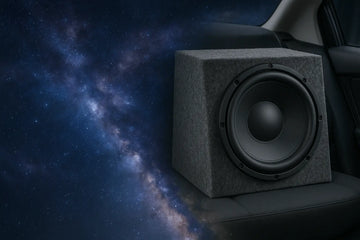Key Highlights
- When choosing a subwoofer for your car audio system, consider power handling, sensitivity ratings, frequency range, and impedance factors.
- The size of the Subwoofer is also an important consideration, especially for smaller vehicles with limited storage space.
- Different enclosure types, such as sealed, ported, and bandpass, can significantly impact the sound quality and performance of the Subwoofer.
- Some of the top subwoofer brands and models include Kicker, JL Audio, and Alpine.
- Installation tips and tricks, including the choice between DIY and professional installation and essential tools and accessories, are important to consider for a successful installation.
- Tuning your Subwoofer for optimal performance involves correctly setting the gain and low-pass filter and adjusting the phase alignment.
Introduction
Choosing the right Subwoofer for your car audio system enhances the bass and overall sound quality. A subwoofer is a specialized speaker designed to reproduce low-frequency sounds, adding depth and impact to your music. Whether you're a bass lover or want to enjoy your favorite songs with more clarity and richness, selecting the best Subwoofer for your needs is crucial.
This blog will guide you through choosing the best Subwoofer for your car audio system. We'll cover key features, including power handling, sensitivity ratings, frequency range, and impedance. We'll also explore different subwoofer sizes, enclosure types, and the top brands and models available in the market. Additionally, we'll provide installation tips and tricks, maintenance advice, and troubleshooting solutions to help you find the best way to get the most out of your Subwoofer.
By the end of this blog, you'll have all the information you need to make an informed decision and choose the best Subwoofer that suits your car audio preferences and requirements.
Understanding Car Audio Subwoofers

Car audio subwoofers are specialized speakers designed to reproduce low-frequency sounds, commonly called bass. While regular car speakers can produce some bass, subwoofers are dedicated to handling lower frequencies with greater accuracy and impact. They are designed to move more air and produce more profound, more powerful bass tones. Subwoofers are an essential component of any car audio system, as they enhance the overall audio experience by filling in the lower end of the sound spectrum.
What Are Subwoofers and Why Are They Important?
Subwoofers are specialized speakers designed to reproduce low-frequency sounds, commonly called bass. They are essential to any car audio system as they add depth, impact, and realism to the music. Regular car speakers cannot reproduce the lower frequencies as accurately or powerfully as subwoofers. Subwoofers are crucial for achieving a balanced and immersive audio experience, especially when listening to genres such as hip-hop, techno, and dubstep that heavily rely on deep bass. They enhance the overall audio quality by filling in the lower end of the sound spectrum, delivering rich, full-bodied bass that can be felt as much as it is heard. Whether you're a music enthusiast or want to enjoy your favorite songs with greater clarity and depth, a subwoofer is a must-have component for your car audio system.
Types of Subwoofers: Powered vs. Passive
When choosing a subwoofer for your car audio system, you'll come across two main types: powered and passive.
Powered subwoofers, also known as active subwoofers, contain a built-in amplifier, eliminating the need for an external amplifier. They are an excellent choice for those who want a simple and convenient setup. Powered subwoofers are compact and take up less space than the average subwoofer box, making them ideal for smaller vehicles with limited storage space. They are also easy to install and require minimal wiring.
On the other hand, passive subwoofers require an external amplifier to power them. They don't have a built-in amplifier and rely on an external power source to produce sound. Passive subwoofers offer more flexibility in terms of customization and power options. They are popular among car audio enthusiasts who prefer control over their audio setup and want to tailor their system to their needs.
When deciding between powered and passive subwoofers, consider the power you need, the space available in your vehicle, and your desired level of customization and control over your audio system.
Key Features to Consider When Choosing a Subwoofer
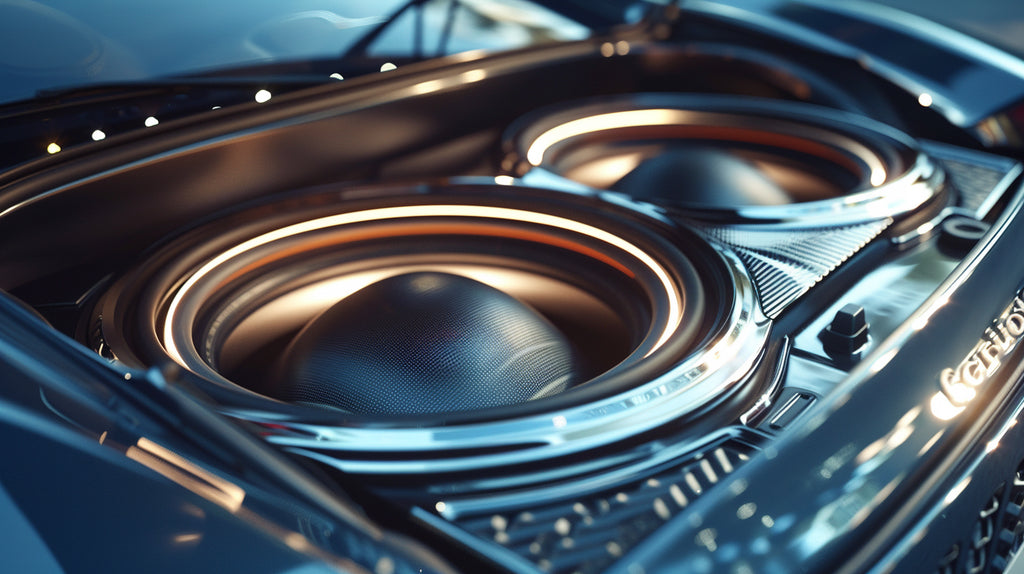
Several key features must be considered when selecting a subwoofer for your car audio system. These features will impact the performance and compatibility of the Subwoofer with your existing setup.
- Power Handling: It's essential to match the power handling capabilities of your Subwoofer with your car amplifier. This ensures optimal performance and prevents damage to the equipment. Check the subwoofer and amplifier's RMS (Root Mean Square) power rating to ensure compatibility.
- Sensitivity Ratings: The sensitivity rating of a subwoofer indicates how efficiently it converts power into sound. A higher sensitivity rating means the Subwoofer will produce more volume with the same power. Consider the sensitivity rating of the Subwoofer to achieve your desired sound quality.
- Frequency Range: The frequency range of a subwoofer determines how low it can reproduce bass frequencies. Consider the frequency range you prefer in your car audio system and choose a subwoofer to deliver those frequencies.
- Impedance: The impedance of a subwoofer should match the impedance of your car audio system. This ensures compatibility and prevents issues related to power transfer and sound quality.
Size Matters: Consider the size of the Subwoofer and the available storage space in your vehicle. Smaller vehicles may require compact subwoofers that can fit in limited spaces.
Power Handling: Matching Your Sub with Your Amp
Matching the power handling capabilities of your Subwoofer with your car amplifier is crucial for optimal performance and preventing damage to the equipment. Power handling refers to the amount of power a subwoofer can handle without distortion or damage. It is usually measured in RMS (Root Mean Square) power.
To match your Subwoofer with your amplifier, compare the RMS power ratings of both components. The RMS power rating of the Subwoofer should be within the power range of the amplifier. If the Subwoofer's power handling is lower than the amplifier's power output, it may not be able to handle the power and can get damaged. Conversely, if the Subwoofer's power handling is higher than the amplifier's power output, you may not fully utilize the Subwoofer's capabilities.
Matching the power handling ensures that your Subwoofer and amplifier work together efficiently, delivering optimal sound quality and preventing any potential damage to the equipment.
Sensitivity Ratings and What They Mean for Sound Quality
The sensitivity rating of a subwoofer indicates how efficiently it converts power into sound. It measures the sound pressure level (SPL) the Subwoofer can achieve with a given amount of power. Sensitivity is usually measured in decibels (dB) and is represented as a numerical value.
A higher sensitivity rating means the Subwoofer can produce more volume with the same power. Subwoofers with higher sensitivity ratings are generally more efficient and require less power to produce the same volume as subwoofers with lower sensitivity ratings.
When choosing a subwoofer, consider the sensitivity rating based on your desired sound quality. A subwoofer with a higher sensitivity rating would be a better choice if you want a louder bass output. However, it's important to note that sensitivity alone does not determine the overall sound quality. Other factors, such as frequency response and enclosure type, significantly affect the Subwoofer's performance.
Frequency Range: How Low Can Your Sub Go?
The frequency range of a subwoofer refers to the range of bass frequencies it can reproduce. It is usually measured in hertz (Hz) and indicates how low the Subwoofer can go in reproducing deep bass tones. The lower the frequency range, the more profound and powerful the bass output.
When choosing a subwoofer, consider the frequency range based on your musical preferences. A subwoofer with a lower frequency range would be ideal if you listen to genres with heavy bass, such as hip-hop or electronic music. However, it's important to note that the frequency range alone does not determine the overall sound quality. Factors such as enclosure type, power handling, and sensitivity ratings contribute to the Subwoofer's performance and the overall audio experience.
Impedance: Ensuring Compatibility with Your Car's Audio System
Impedance refers to the electrical resistance of a subwoofer and is measured in ohms. It is an essential factor to consider when choosing a subwoofer as it determines the compatibility with your car's audio system.
To ensure compatibility, the impedance of your Subwoofer should match the impedance of your car's audio system. If the impedance is mismatched, it can lead to issues such as reduced power transfer, distortion, and potential damage to the equipment.
Standard impedance ratings for car audio systems are 2 ohms, 4 ohms, and 8 ohms. It's essential to check the impedance ratings of both your Subwoofer and amplifier to ensure they are compatible. If you're unsure about the impedance requirements of your car's audio system, consult the manufacturer's specifications or seek advice from a car audio professional.
Selecting the Right Subwoofer Size

When choosing a subwoofer for your car audio system, the size of the Subwoofer is a critical consideration. The size of the Subwoofer will impact its performance and the available storage space in your vehicle.
Compact subwoofers are a better choice for smaller vehicles with limited storage space. These subwoofers are designed to fit in tight spaces while still delivering powerful bass. Compact subwoofers are ideal for those who want to enhance their car audio system with deep bass without compromising storage space.
On the other hand, larger vehicles with ample storage space can accommodate larger subwoofers. These subwoofers can produce even more profound and powerful bass, providing a more immersive audio experience.
Consider the available storage space in your vehicle and choose a subwoofer size that fits your requirements and preferences.
Benefits and Drawbacks of Different Subwoofer Sizes
Smaller subwoofers (8-10 inches):
- Ideal for smaller vehicles with limited storage space
- It can still produce powerful bass but may not reach the lowest frequencies
- Require smaller enclosures, allowing for easier installation and flexibility in placement
Medium-sized subwoofers (12 inches):
- Provide a good balance between size, bass output, and storage space
- Can produce deep and impactful bass
- Require moderate-sized enclosures, which may limit placement options in certain vehicles
Larger subwoofers (15-18 inches):
- Deliver the most profound and most powerful bass
- Require larger enclosures, which can take up significant storage space
- It is ideal for those who prioritize bass performance over storage space
When choosing the right subwoofer size for your vehicle, consider your storage space limitations, desired bass output, and the trade-off between size and performance.
Installation Considerations for Large vs. Small Subs
The installation process for subwoofers varies depending on their size. Large subwoofers require more space for both the Subwoofer and the enclosure, which may limit installation options in smaller vehicles. On the other hand, smaller subwoofers are more versatile and can be installed on a broader range of vehicles.
When installing large subs, consider the following:
- Ensure enough space in your vehicle for both the Subwoofer and the enclosure.
- Choose an enclosure type that best suits your needs and vehicle space limitations.
- Test various placement options to find the best location for optimal sound performance.
When installing small subs, consider the following:
- Take advantage of the smaller size to explore different placement options, such as under seats or in the trunk.
- Ensure the enclosure is securely mounted and properly sealed to prevent vibrations and rattling.
- Consider the wiring and power requirements for the Subwoofer, ensuring compatibility with your car's electrical system.
Enclosure Types and Their Impact on Sound
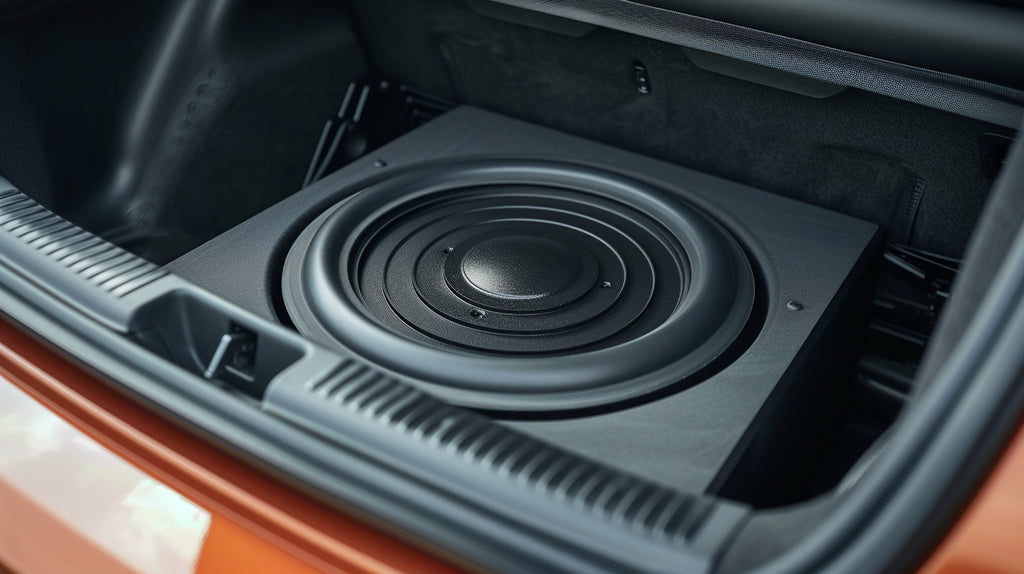
The type of enclosure used with your Subwoofer can significantly impact the sound quality and performance. Different enclosure types are available, each with its characteristics and benefits.
- Sealed Enclosures: Provide tight and accurate bass reproduction with a well-defined sound. They are less sensitive to placement and can be used in various vehicle types.
- Ported Enclosures: Enhance bass response and overall volume output. They allow for greater efficiency and can produce louder and deeper bass tones.
- Bandpass Enclosures: Provide a combination of sealed and ported designs, resulting in a narrower frequency range but increased overall volume.
Choosing the right enclosure type depends on your preference, desired sound characteristics, and the specific requirements of your car's audio system.
Sealed vs. Ported vs. Bandpass Enclosures
Sealed Enclosures:
- Provide tight, accurate bass reproduction with a well-defined sound
- They are less sensitive to placement, making them versatile and suitable for various vehicle types
Deliver better transient response and control over the woofer's movement
Ported Enclosures:
- Enhance bass response and overall volume output
- Allow for greater efficiency, resulting in louder and deeper bass tones
- Require careful tuning to avoid excessive port noise or distortion
Bandpass Enclosures:
- Combine the benefits of sealed and ported designs
- Provide a narrower frequency range but increased overall volume
- Can deliver a punchy and impactful bass response
When choosing between sealed, ported, and bandpass enclosures, consider your desired sound characteristics, available space, and the type of music you listen to the most.
Custom vs. Pre-fabricated Enclosures
When selecting an enclosure for your Subwoofer, you can choose between custom and pre-fabricated enclosures.
Custom enclosures are specifically designed and built to fit your vehicle's specifications. They can be made from various materials, such as medium-density fiberboard (MDF), a popular choice due to its strength and acoustic properties. Custom enclosures offer the advantage of precise tuning and optimization for your specific Subwoofer and vehicle, resulting in better sound quality and performance. However, they often require professional installation and can be more expensive. On the other hand, pre-fabricated enclosures, also known as car sub-boxes, are pre-made and designed to fit a variety of subwoofers and vehicles. They are usually made from MDF and lined with materials like Polyfil to improve sound quality. While they may not offer the same level of customization as custom enclosures, they are a more budget-friendly option and can be easily installed by car owners.
Pre-fabricated enclosures are pre-built and designed to fit a range of subwoofers and vehicles. They are available in different shapes and sizes, providing a convenient and cost-effective option. While pre-fabricated enclosures may not offer the same level of customization as custom enclosures, they still provide excellent bass performance and are suitable for most car audio systems.
When choosing between custom and pre-fabricated enclosures, consider your budget, installation preferences, and desired level of customization.
The Best Subwoofer Brands and Models
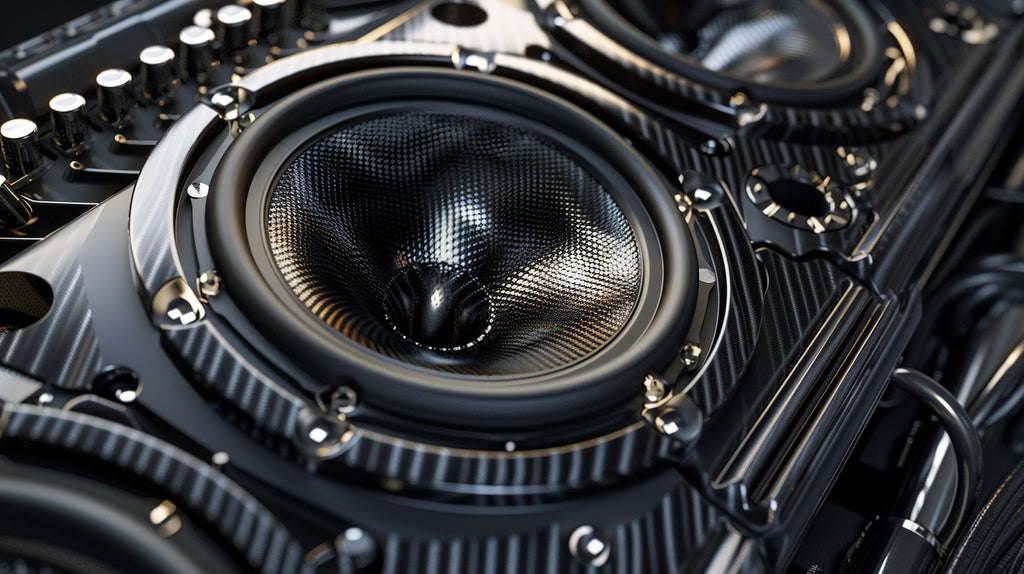
Several top subwoofer brands are known for their quality and performance in the car audio industry. Some of the best subwoofer brands include:
- Kicker: Known for their powerful and reliable subwoofers, Kicker offers various options to suit different budgets and preferences.
- JL Audio: Renowned for its high-end subwoofers, it delivers exceptional sound quality and precision engineering.
- Alpine: Recognized for their innovative designs and cutting-edge technology, Alpine offers subwoofers that deliver outstanding performance and durability.
These brands have established a reputation for producing high-quality subwoofers that deliver exceptional bass performance and are worth considering when choosing a subwoofer for your car audio system.
Top Picks for Budget, Mid-Range, and High-End Subwoofers
When choosing a subwoofer for your car audio system, top picks are available in different price ranges to suit various budgets and preferences. Here are some recommendations for budget, mid-range, and high-end subwoofers:
Budget Subwoofers:
- Kicker CompR 12" Subwoofer
- Alpine Type-R 10" Subwoofer
- JL Audio 10W0v3-4 W0v3 Series 10" Subwoofer
Mid-Range Subwoofers:
- Kicker CompC 12" Subwoofer
- Alpine Type-S 12" Subwoofer
- JL Audio 12TW3-D4 Thin-Line Series 12" Subwoofer
High-End Subwoofers:
- Kicker Solo-Baric L7R 12" Subwoofer
- JL Audio 13W7AE-D1.5 W7 Series 13.5" Subwoofer
- Alpine X-Series 12" Subwoofer
These subwoofers offer performance, durability, and value for different price ranges, making them top picks in their respective categories.
|
Subwoofer |
Size |
Power Handling |
Impedance |
Price |
|
Kicker CompR 12" |
12" |
500W RMS / 1000W Peak |
2 Ohms |
$149.99 |
|
Alpine Type-R 10" |
10" |
600W RMS / 1800W Peak |
4 Ohms |
$199.99 |
|
JL Audio 10W0v3-4 |
10" |
300W RMS / 600W Peak |
4 Ohms |
$139.99 |
Brand Reliability and Customer Satisfaction
When investing in a subwoofer for your car audio system, it's essential to consider the brand's reliability and customer satisfaction. A reliable brand will ensure that the Subwoofer performs as expected and lasts long. Additionally, excellent customer satisfaction indicates that the brand provides reliable customer support and stands behind its products.
Some brands known for reliability and customer satisfaction in the car audio industry include Kicker, Alpine, and JL Audio. These brands have a strong reputation for producing high-quality subwoofers that deliver exceptional performance. They also provide excellent customer support and offer warranties on their products.
Before making a purchase, it's a good idea to read customer reviews and ratings to get an idea of other customer's experiences with the brand and its products. This can give you valuable insights into the brand's reliability and customer satisfaction.
Installation Tips and Tricks
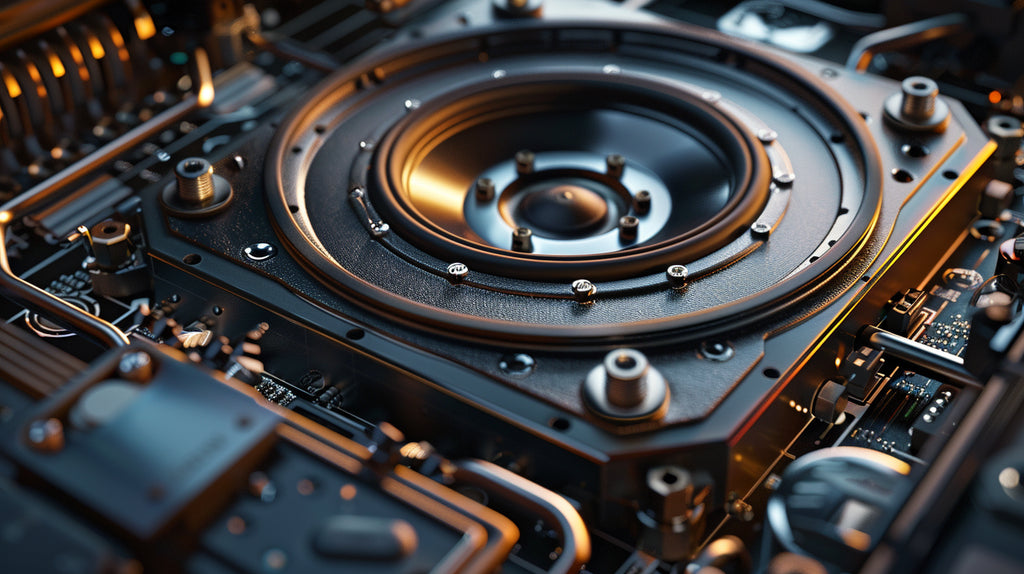
Installing a subwoofer in your car audio system can be a DIY project or done professionally. DIY installation can be cost-effective if you have experience with car audio installations and feel confident in your skills. However, if you're unfamiliar with car audio installations or want a more professional result, it's best to leave the installation to the experts to avoid any hassle.
When installing a subwoofer, follow the manufacturer's instructions and use proper wiring techniques. Choosing the right subwoofer location and ensuring proper grounding and power connections.
For a professional installation, seek the help of an experienced car audio installer. They have the knowledge and expertise to install the Subwoofer correctly and optimize its performance within your car audio system.
DIY Installation vs. Professional Installation
Deciding between a DIY installation or a professional installation for your car subwoofer depends on your level of expertise and the desired outcome. DIY installation can be a cost-effective option for those with experience with car audio installations who feel confident in their skills. It allows you to customize the installation to your liking and can be rewarding.
However, professional installation offers several advantages. Car audio installers have the knowledge and expertise to ensure proper wiring, placement, and tuning of the Subwoofer for optimal performance. They also have access to specialized tools and equipment that may not be readily available to DIY installers.
Professional installation is recommended if you're unsure about your skills or want the best possible result. It ensures that your Subwoofer is installed correctly, minimizing the risk of damage to your car's electrical system and maximizing the performance of your Subwoofer.
Essential Tools and Accessories for Installing Your Sub
When installing a subwoofer in your car, you will need several essential tools and accessories to ensure a successful installation. These tools and accessories include:
- Screwdriver set: A set of screwdrivers will be required to remove panels and secure the Subwoofer.
- Wire cutters/strippers: These tools are essential for cutting and stripping the wiring to connect the Subwoofer to the amplifier.
- Crimping tool: A crimping tool is necessary to secure the wire connections properly.
- Power drill: A power drill may be needed to create holes for mounting brackets or wiring.
- Mounting brackets: Depending on the type of Subwoofer and the installation location, mounting brackets may be required to secure the Subwoofer in place.
- Wiring kit: A wiring kit will provide all the necessary wiring and connectors to connect the Subwoofer to the amplifier and power source.
These tools and accessories will make the installation easier and ensure a professional result.
Tuning Your Subwoofer for Optimal Performance
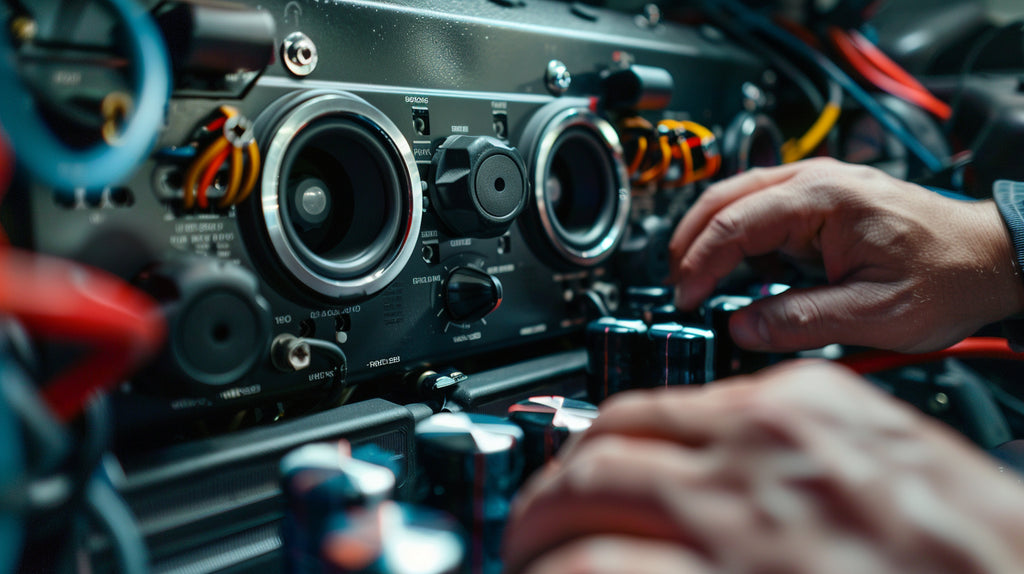
Tuning your Subwoofer is essential to achieve optimal performance and get the best sound quality from your car audio system. Proper tuning ensures the Subwoofer produces the desired bass response without distorting or overpowering the other speakers.
To tune your Subwoofer, start by correctly setting the gain and low-pass filter on your amplifier. The gain controls the input signal level, and the low-pass filter determines the frequencies the Subwoofer will reproduce. Adjusting these settings will help achieve a balanced sound.
Additionally, phase alignment is crucial for proper subwoofer performance. Ensuring that the Subwoofer's phase is in sync with the other speakers will eliminate any cancellation or reinforcement of frequencies, resulting in a smoother and more accurate bass response.
Setting the Gain and Low-Pass Filter Correctly
To achieve optimal performance from your Subwoofer, it's essential to set the gain and low-pass filter on your amplifier correctly. The gain controls the input signal level, while the low-pass filter determines the frequencies the Subwoofer will reproduce.
Start by setting the gain to a moderate level. Too high of a gain can result in distortion and damage to the Subwoofer, while too low of a gain can lead to a weak bass response. Adjust the gain gradually, listening to the sound and making fine adjustments until you achieve the desired bass level.
Next, set the low-pass filter. This filter allows only the frequencies below a certain point (typically around 80Hz) to be sent to the Subwoofer. Adjust the low-pass filter to blend the bass frequencies with the rest of the audio system, ensuring a smooth transition between the Subwoofer and the other speakers.
The Importance of Phase Alignment and How to Adjust It
Phase alignment is an essential aspect of subwoofer tuning that ensures the Subwoofer is in sync with the other speakers in your car audio system. When the Subwoofer's phase is not aligned with the other speakers, it can cancel or reinforce specific frequencies, leading to an inaccurate and muddy bass response.
To adjust the phase alignment of your Subwoofer, start by playing a test tone that emphasizes the bass frequencies. Listen for any cancellation or reinforcement of these frequencies. Then, adjust the phase switch on the subwoofer or amplifier settings. Changing the phase switch by 180 degrees will help correct any phase issues.
Continue to listen to the test tone and make fine adjustments to the phase switch until you achieve a smooth and accurate bass response that blends seamlessly with the rest of the audio system.
Maintaining Your Subwoofer for Longevity
Proper maintenance is essential for ensuring your Subwoofer's longevity and optimal performance. Here are some tips for maintaining your Subwoofer:
- Keep the Subwoofer clean and free from dust and debris. Regularly dust the surface and use a soft cloth or brush to clean the speaker cone.
- Avoid exposing the Subwoofer to excessive heat or moisture, as this can damage the internal components.
- Check the wiring connections periodically to ensure they are secure and corrosion-free.
- If you notice any distortion or irregularities in the sound, have the Subwoofer professionally inspected and repaired if necessary.
By following these maintenance tips, you can prolong the lifespan of your Subwoofer and continue to enjoy high-quality bass performance in your car audio system.
Routine Maintenance Tips
Routine maintenance is crucial for keeping your Subwoofer in optimal condition. Here are some routine maintenance tips to follow:
- Clean the Subwoofer regularly to remove dust and debris. Use a soft cloth or brush to dust the surface and gently clean the speaker cone.
- Check the wiring connections periodically to ensure they are secure and corrosion-free. Loose or corroded connections can affect the Subwoofer's performance.
- Inspect the Subwoofer for any physical damage, such as tears in the speaker cone or dents in the enclosure. If you notice any damage, have it repaired or replaced promptly.
- Avoid exposing the Subwoofer to extreme temperatures or moisture, which can damage the internal components.
- If you notice any distortion or irregularities in the sound, have the Subwoofer professionally inspected and repaired if necessary.
By following these routine maintenance tips, you can extend the lifespan of your Subwoofer and enjoy optimal performance for years to come.
Troubleshooting Common Subwoofer Issues
Sometimes, subwoofers can encounter issues that affect their performance. Here are some common subwoofer issues and troubleshooting tips:
- No sound: Check the wiring connections to ensure they are secure. Verify that the amplifier is powered on and functioning correctly. If the issue persists, the Subwoofer may have a problem, and professional inspection is recommended.
- Distorted sound: Check the gain settings on the amplifier. If the gain is set too high, it can cause distortion. Adjust the gain to an appropriate level and test the sound again.
- Weak bass: Check the low-pass filter settings. If the filter is set too low, it can result in a weak bass response. Adjust the low-pass filter to allow more bass frequencies to pass through.
- Rattling or buzzing sound: This can indicate a loose or damaged component in the Subwoofer. Inspect the Subwoofer for any physical damage and tighten any loose screws or connections.
If troubleshooting steps do not resolve the issue, seeking professional assistance for further diagnosis and repair is recommended.
Conclusion
Choosing the best sub for your car audio system involves understanding key features like power handling, sensitivity ratings, frequency range, and impedance. Consider the benefits of different subwoofer sizes and installation types to enhance sound quality. Top picks from reliable brands cater to various budgets. Whether opting for a DIY or professional installation, tuning your sub for optimal performance is crucial. Routine maintenance and troubleshooting ensure longevity. You can enjoy an enhanced audio experience on the go with proper care and attention to detail. Explore the world of car audio subwoofers to elevate your driving soundtrack.
Frequently Asked Questions

Can I Connect Multiple Subwoofers to My Car Audio System?
Yes, connecting multiple subwoofers to your car audio system is possible. However, it requires careful wiring and configuration. Refer to the wiring diagrams provided by the subwoofer manufacturer and ensure that your amplifier can handle the combined power requirements of the subwoofers. Use appropriate wiring and terminals to connect the subwoofers in parallel or series configuration, depending on your system's setup.
How Do I Know If a Subwoofer Is Compatible with My Car Stereo?
To ensure compatibility between a subwoofer and your car stereo, consider the following factors:
- Impedance: Check the Subwoofer's impedance rating (measured in ohms) and ensure it matches the recommended impedance range of your car stereo.
- Wiring: Verify that your car stereo has the necessary wiring connections to accommodate the Subwoofer.
- Consult the Subwoofer and car stereo manuals or seek professional advice to ensure compatibility.
How Can I Improve the Bass in My Car Without Adding a Sub?
If you want to improve the bass in your car audio system without adding a subwoofer, consider upgrading your car speakers. Look for speakers with a larger cone surface area and lower frequency response. Additionally, consider installing a bass system or enclosure to enhance bass reproduction in your car speakers.


